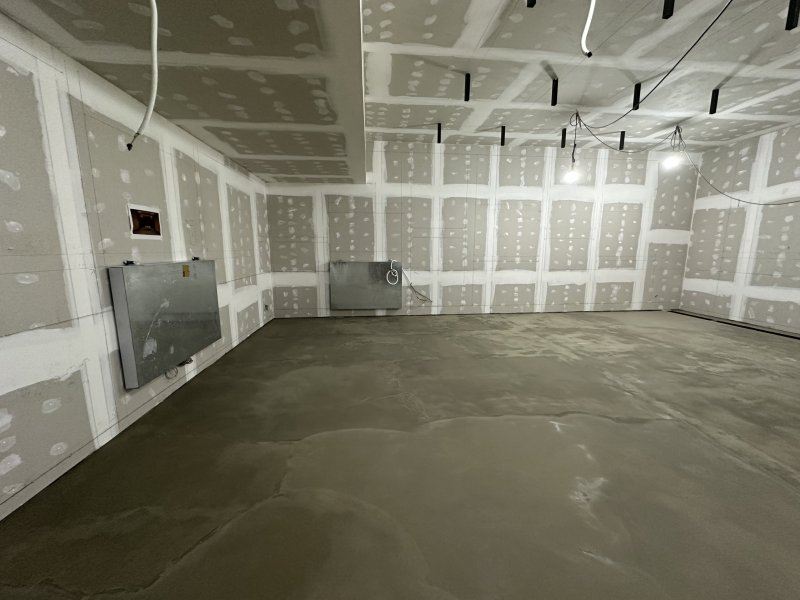I will need to re-examine the propagation of excitation/vibrational energy from the front plate to better understand how it dissipates maximally, and iterate/improve the design accordingly. Ideally, the front plate needs to be able to reach maximum excitation without any hinderance, and all of the energy to dissipate through the glued foam backing.
Yet, the whole apparatus (30-40kg in weight) needs to somehow be mounted sturdily without the risk of collapse. I don't think it would be viable to just glue the foam to the gypsum wall, as the load will rip the foam into pieces in two seconds flat.
Should I minimize the mass/length of the horizontal section by cutting out everything except two small tabs which connect the resilient mounting brackets to the plate? The front metal plate would become "free" and unhindered to resonate more freely, unimpeded by the curved horizontal section which runs through the entire length/width to stiffen the front plate?
Yes, they will be tested progressively as they're added to the room's walls.
BTW, I don't think it's possible to over-absorb bass energy, because even this sort of heroic treatment will only selectively reduce the bass frequencies/pressure very slightly, perhaps just 3-5dB. The demons and gorillas we call room nodes will need to be tamed through other additional means through active bass cancellation devices such as room-node-cancellation subwoofers and PSI Audio AVAAs.
Yet, the whole apparatus (30-40kg in weight) needs to somehow be mounted sturdily without the risk of collapse. I don't think it would be viable to just glue the foam to the gypsum wall, as the load will rip the foam into pieces in two seconds flat.
Should I minimize the mass/length of the horizontal section by cutting out everything except two small tabs which connect the resilient mounting brackets to the plate? The front metal plate would become "free" and unhindered to resonate more freely, unimpeded by the curved horizontal section which runs through the entire length/width to stiffen the front plate?
Yes, they will be tested progressively as they're added to the room's walls.
BTW, I don't think it's possible to over-absorb bass energy, because even this sort of heroic treatment will only selectively reduce the bass frequencies/pressure very slightly, perhaps just 3-5dB. The demons and gorillas we call room nodes will need to be tamed through other additional means through active bass cancellation devices such as room-node-cancellation subwoofers and PSI Audio AVAAs.
Last edited:




